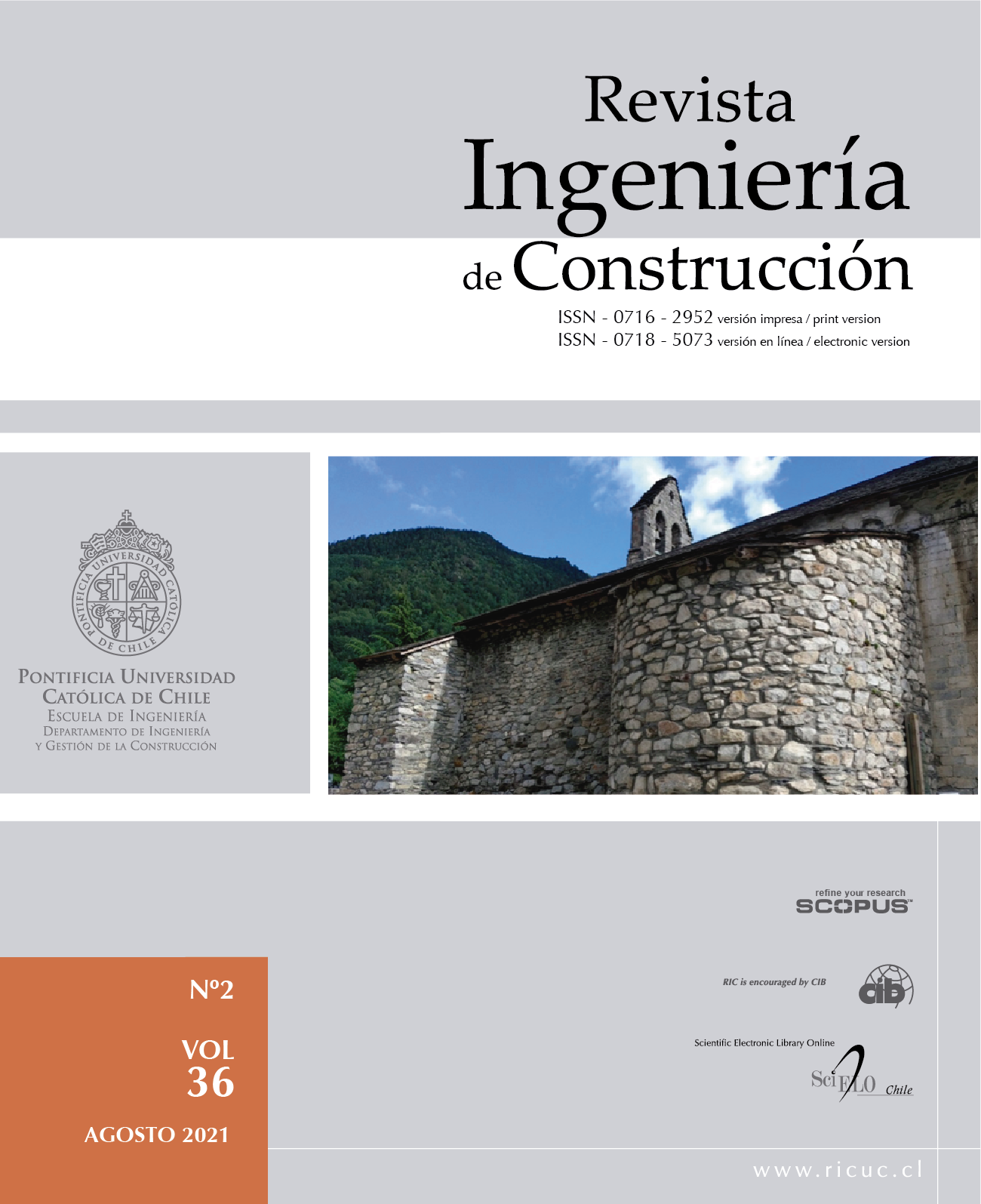Behavior analysis of high strength concrete containing macropolymeric fibers based on workability and mechanical properties
Keywords:
fiber reinforced concrete, macro-polymeric fiber, workability, toughnessAbstract
The main purpose of fiber reinforcement in concrete is to increase the post-cracking resistance of the composite, which reflects on toughness gain, being steel fibers traditionally used for this purpose. In recent years, an alternative to the steel fibers has emerged in the market for concrete reinforcement: the macro-polymeric fiber. However, there is few research on its performance as a reinforcement element in concrete, particularly when it is a high strength concrete. Given this, the behavior of high strength concrete, without fiber and with macro-polymeric fiber, both in fresh and hardened state, is analyzed in this paper. The workability was evaluated by the slump test and the mechanical properties were evaluated by the tests of compressive strength, Barcelona, flexure of prisms and punching of plates. It was found that, depending on the property to be analyzed, the increase of the macro-polymeric fiber content may be unfeasible. In the flexural test in prisms, for example, most parameters evaluated showed no significant changes when increasing the fiber content. In addition, it was observed that the same concrete mixture may present different behavior depending on the test performed.


